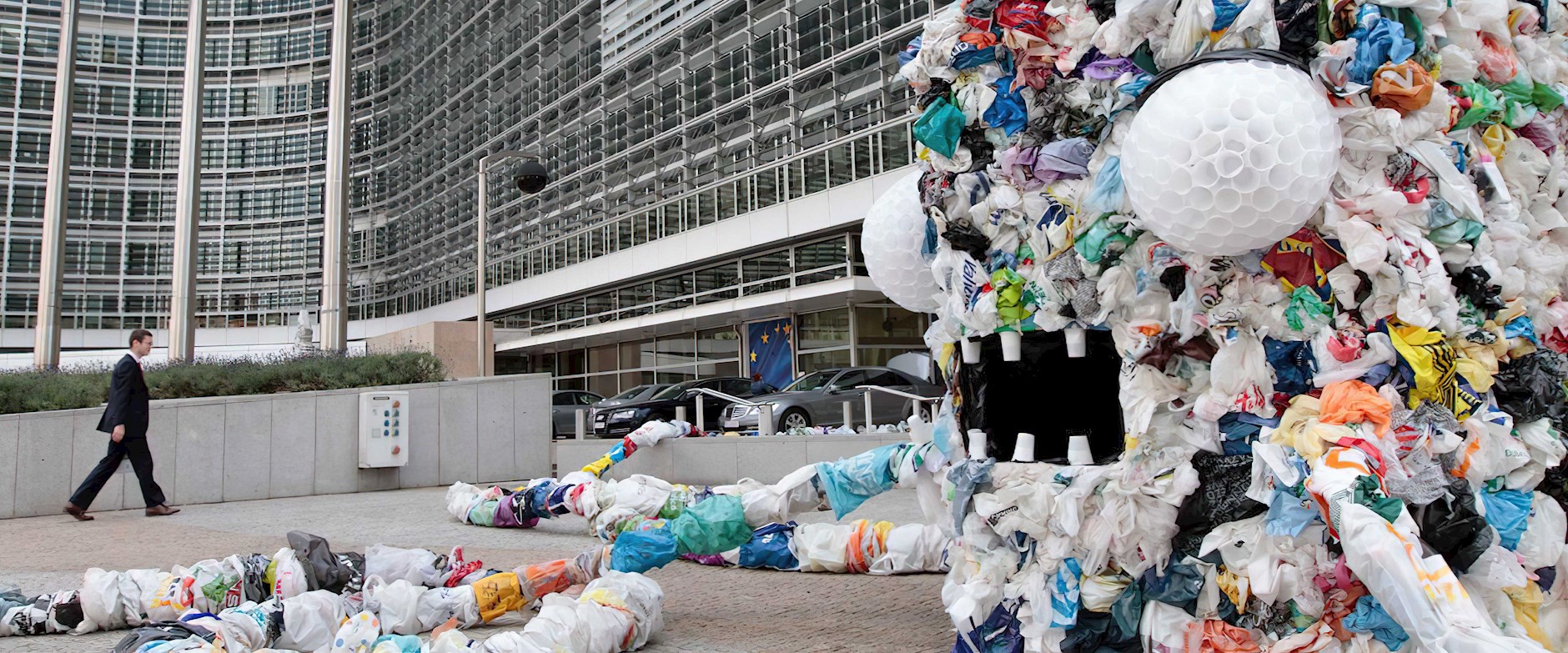
Why China’s Pandemic Stimulus Worked Better Than the US’s
Research finds China’s digital coupon programs were a cost-effective way to boost spending.
Why China’s Pandemic Stimulus Worked Better Than the US’s
Associated Press
As well-intentioned bans on plastic shopping bags roll out across the United States, there’s an unintended consequence that policy makers should take into account. It turns out that when shoppers stop receiving free bags from supermarkets and other retailers, they make up for it by buying more plastic trash bags, significantly reducing the environmental effectiveness of bag bans by substituting one form of plastic film for another, according to University of Sydney’s Rebecca L. C. Taylor.
Economists call this phenomenon “leakage”—when partial regulation of a product results in increased consumption of unregulated goods, Taylor writes. But her research focusing on the rollout of bag bans across 139 California cities and counties from 2007 to 2015 puts a figure on the leakage and develops an estimate for how much consumers already reuse those flimsy plastic shopping bags.
This is a live issue. After all those localities banned disposable bags, California outlawed them statewide, in 2016. In April 2019, New York became the second US state to impose a broad ban on single-use plastic bags. Since 2007, more than 240 local governments in the US have enacted similar policies.
The issue is a global one, as the environmental impact of plastic bags, straws, and utensils has been well-documented. The United Nations Environment Programme estimates that use of these products leads to an annual $13 billion of damage to global marine ecosystems alone.
To study the effect of disposable-plastic-bag bans on unregulated bag consumption, Taylor crafted a model that tracked the purchase of plastic bags following local bans on disposable bags. She measured sales across 546 retailers―including supermarkets, big-box stores, and pharmacies―using retail scanner data from the Nielsen Datasets at the Kilts Center for Marketing.
The findings suggest that regulating plastic carryout bags led to an overall reduction in Californians’ plastic use—but the benefits were offset by leakage.
She finds that the bag bans reduced the use of disposable shopping bags by 40 million pounds a year. But purchases of trash bags increased by almost 12 million pounds annually, offsetting about 29 percent of the benefit, her model demonstrates. Sales of small trash bags jumped 120 percent, of medium bags, 64 percent, and of tall kitchen garbage bags, 6 percent. Moreover, use of paper bags rose by more than 80 million pounds, or 652 million sacks, she finds.
In addition, Taylor’s research suggests that, before the bag bans, consumers were reusing 12–22 percent of them as bin liners. Thus, the bans on disposable bags actually—and unintentionally—discouraged some environmentally responsible behavior. The labeling of such bags as strictly “single use” is also questionable, Taylor writes.
What are the broader implications for the environment? Thin, disposable plastic bags are nonbiodegradable and can easily exit waste streams and enter waterways and the environment, causing enormous damage to marine ecosystems and wildlife, Taylor writes. On the other hand, heavier plastic and paper bags take more energy and water to produce and transport, emitting more greenhouse gases and taking up more landfill space.
The question is whether the benefits of reduced litter and marine-life destruction from disposable-bag bans outweigh the costs of greater greenhouse-gas emissions and use of landfills related to the unregulated plastics, Taylor writes. The trade-off underscores the need for regulators to consider the effects of product substitution when crafting policies.
Regulators may implement different policies on the basis of whether certain populations are more or less likely to reuse disposable plastic bags, she suggests. They might also consider promoting the production of thin, low-cost carryout bags designed specifically to be reused as trash bags, Taylor writes.
Rebecca L. C. Taylor, “Bag Leakage: The Effect of Disposable Carryout Bag Regulations on Unregulated Bags,” Journal of Environmental Economics and Management, January 2019.

Research finds China’s digital coupon programs were a cost-effective way to boost spending.
Why China’s Pandemic Stimulus Worked Better Than the US’s
Monetary policy makers set the stage for inflation but were slow to respond when it appeared.
The Case for and against Central Bankers
Job loss, divorce, and other life events far outweigh negative equity.
What’s Actually behind Most Mortgage DefaultsYour Privacy
We want to demonstrate our commitment to your privacy. Please review Chicago Booth's privacy notice, which provides information explaining how and why we collect particular information when you visit our website.